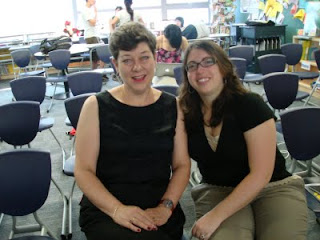(This is the first part of a 2-part blog series on the Flat Classroom Workshop held in Hong Kong, September 2009)
The Flat Classroom Workshop was held as a strand of the 21st Century Learning Conference in Hong Kong, September 2009.
This blog post attempts to DESCRIBE what we did in HK. Part 2 and 3 of this series will attempt to reflect on the significance of the workshop and where we got to from here.
In preparation for the Flat Classroom Workshop Vicki Davis, Kim Cofino and me were interviewed in Second Life, 'Meet the Forces' By Chris Smith, Shambles Guru. The audio recording is clear and details some brief history of the Flat Classroom Projects and leads into the workshop details.
Discover Simple, Private Sharing at Drop.io
We are grateful to Chris also for the work he contributed to our event by collecting not only multimedia to do with the pre-workshop SL interview, but also videoing reflections while at the event. These can all be viewed on the 21chk Ning in the Flat Classroom Workshop Group.
Also, at the 21CHK opening event Kim Cofino and I presented a short 'keynote' to get the ball rolling with what we do and what the workshop was to achieve.
What is the Flat Classroom Workshop? What did we do?

About 30 students from 6 different schools, along with about 12 educators from the same schools and more came together for 2.5 days to workshop what it means to learn in a flat world.
Participants were divided into teams of about 4 (3-4 is the optimal number according to research) real participants. In addition we had virtual signups so each team had 2-3 'virtual' members as well.
Teams communicated with each other via a permanent backchannel and a uStream.tv broadcast. The workshop sessions were broadcast to the world so that virtual participants could see and hear what we were doing and interact with their team in real time as well as using the chat facility. In addition this provided recordings and saved text for asynchronous viewing.
Teams were given the task of exploring the 'digital divide' with the purpose of identifying global issues, brainstorming solutions, and selecting a solution that could be developed as a pitch and then as a final product.
The Workshop Overview and Action Project wikis provide more detail about the process.
In order to foster community learning and enhanced understanding of each other....remembering that all teams had participants who did NOT know each other....we started with a cultural scavenger hunt, see handouts page for all details, and included the virtual participants with an invitation to respond via an online form.
The entire workshop schedule shows the intensity of the 3 days. We included brief information sessions (Compelling presentations, Making a lasting impression, Elevator speech and perfect pitch and so on), collaboration time and organised interaction times with the main conference where participants could pitch their
 ideas and have feedback from viewers. Infrastructure for all work was provided by essential Web 2.0 tools, especially the Wiki and Ning.
ideas and have feedback from viewers. Infrastructure for all work was provided by essential Web 2.0 tools, especially the Wiki and Ning.As a culmination to the workshop participants were charged with organising and presenting a 30 minute closing session to the entire conference body. This was student-led and organised and included the 3 teams voted internationally as the 'most likely to succeed' with their solution to the digital divide issues, as well as other multimedia and ideas from participants showing what a flat classroom learning environment really looks like.
Team 1 'pitches' their digital divide ideas and solutions to educators for feedback - an essential part of the Flat Classroom Workshop process
Further resources of final outcomes can be found on the Day 3 wiki (embedded uStream of closing presentation as well as individual multimedia for the closing) and Multimedia wiki.The slideshow of Kim Cofino's pics on Flickr speaks louder than words. Thanks Kim for all of your hard work!
Photos from Flickr:
http://www.flickr.com/photos/superkimbo/3941060340/in/set-72157622424150942/
http://www.flickr.com/photos/21chk/3929810961/



No comments:
Post a Comment